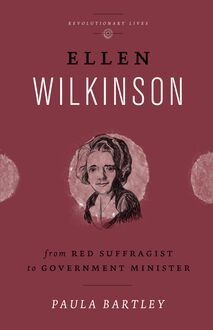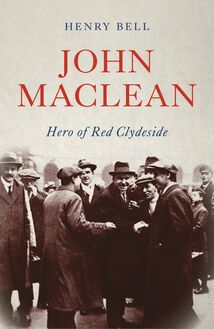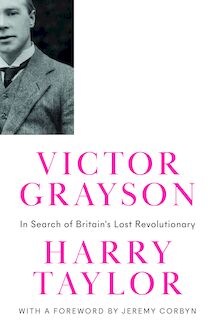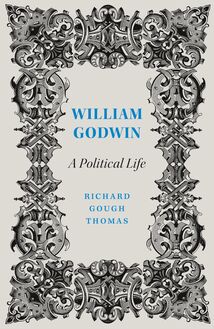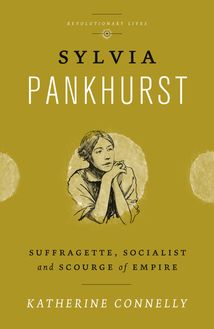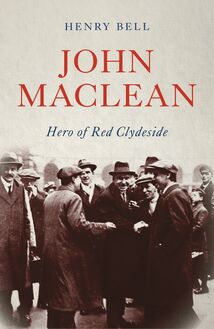James Baldwin , livre ebook
154
pages
English
Ebooks
2019
Vous pourrez modifier la taille du texte de cet ouvrage
Obtenez un accès à la bibliothèque pour le consulter en ligne En savoir plus
Découvre YouScribe et accède à tout notre catalogue !
Découvre YouScribe et accède à tout notre catalogue !
154
pages
English
Ebooks
2019
Vous pourrez modifier la taille du texte de cet ouvrage
Obtenez un accès à la bibliothèque pour le consulter en ligne En savoir plus
Publié par
Date de parution
20 septembre 2019
Nombre de lectures
2
EAN13
9781786804976
Langue
English
'A scrupulous biography' -- Publishers Weekly
'Fresh, incisive, and uplifting' -- Kirkus
'If you want to know the real Baldwin, this is the book to read' -- Robin D.G. Kelley, author of Thelonious Monk
James Baldwin is an icon of liberation who created some of the most important literary works of his time, including the novels Go Tell It on the Mountain and If Beale Street Could Talk. Here, Bill V. Mullen celebrates the life of the great African-American writer and activist.
As a lifelong anti-imperialist, black queer advocate, and feminist, James Baldwin was a passionate chronicler of the rise of the Civil Rights Movement, the US war against Vietnam, the Palestinian liberation struggle, and the rise of LGBTQ+ rights.
Mullen pays homage to Baldwin’s truly radical approach to his life, writing and activism. Constantly in struggle for an anti-racist, emancipated world, Baldwin’s philosophy and politics were ahead of their time, predicting many of today’s movements such as Black Lives Matter.
Bill V. Mullen is Professor of American Studies at Purdue University. He is the author of W.E.B. Du Bois: Revolutionary Across the Color Line, amongst other books.
Illustrations
Preface: James Baldwin—A Revolutionary For Our Time
1. Baptism by Fire: Childhood and Youth, 1924–42
2. Dissidence, Disillusionment, Resistance: 1942–48
3. Political Exile and Survival: 1948–57
4. Paying His Dues: 1957–63
5. Baldwin and Black Power: 1963–68
6. Morbid Symptoms and Optimism of the Will: 1968–79
7. Final Acts
Postscript: Baldwin’s Queer Legacies
Notes
Acknowledgments
Index
James Baldwin
James Baldwin
Living in Fire
Bill V. Mullen
For Max and Shayari
First published 2019 by Pluto Press
345 Archway Road, London N6 5AA
www.plutobooks.com
Copyright Bill V. Mullen 2019
The right of Bill V. Mullen to be identified as the author of this work has been asserted by him in accordance with the Copyright, Designs and Patents Act 1988.
Every effort has been made to trace copyright holders and to obtain their permission for the use of copyright material in this book. The publisher apologises for any errors or omissions in this respect and would be grateful if notified of any corrections that should be incorporated in future reprints or editions.
British Library Cataloguing in Publication Data
A catalogue record for this book is available from the British Library
ISBN 978 0 7453 3854 5 Hardback
ISBN 978 1 7868 0496 9 PDF eBook
ISBN 978 1 7868 0498 3 Kindle eBook
ISBN 978 1 7868 0497 6 EPUB eBook
This book is printed on paper suitable for recycling and made from fully managed and sustained forest sources. Logging, pulping and manufacturing processes are expected to conform to the environmental standards of the country of origin.
Typeset by Stanford DTP Services, Northampton, England
Simultaneously printed in the United Kingdom and United States of America
Contents
Illustrations
Preface: James Baldwin-A Revolutionary For Our Time
1 Baptism by Fire: Childhood and Youth, 1924-42
2 Dissidence, Disillusionment, Resistance: 1942-48
3 Political Exile and Survival: 1948-57
4 Paying His Dues: 1957-63
5 Baldwin and Black Power: 1963-68
6 Morbid Symptoms and Optimism of the Will: 1968-79
7 Final Acts
Postscript: Baldwin s Queer Legacies
Notes
Acknowledgments
Index
Illustrations
1. James Baldwin in 1955, the year of publication of his essay collection Notes of a Native Son .
2. Baldwin with his friend, actor Marlon Brando, at the 1963 March on Washington.
3. Baldwin lecturing in Amsterdam, 1984.
4. Baldwin in Hyde Park, London, 1968.
5. Baldwin on a 1974 speaking tour in Amsterdam, here promoting a Dutch translation of his novel If Beale Street Could Talk . In 2018 Director Barry Jenkins ( Moonlight ) adopted the novel for film.
6. Baldwin demonstrated an interest in anarchism in the 1940s. He subscribed to both Why? , a U.S.-based anarchist periodical, and War Commentary , an anarchist publication produced in the United Kingdom. He likely attended anarchist meetings in New York before leaving the U.S. for Paris in 1948.
7. Baldwin described himself as a socialist and a Trotskyite for a brief time during the 1940s. He subscribed at least temporarily to Challenge! , the newspaper of the Young People s Socialist League, which he claimed to have joined. This issue from his personal archive is dated 1944.
8. Baldwin struggled to make ends meet after graduating high school. In 1944, he worked temporarily for both the U.S. Postal Service, and the Office of War Information. These 1944 government tax forms show him earning a total of 47.25 in the former job and 125.00 in the latter.
9. Baldwin s dear friend, mentor and muse Beauford Delaney, a model for Baldwin of what the Black artist could be, painted this portrait of Baldwin around 1957.
10. Letter sent to Mary Painter by Baldwin, from the A.G. Gaston Motel, one of the few Black-owned hotels in the South, and thus something of a refuge.
11. A page from the manuscript for Another Country including the handwritten inscription, Mary s Copy.
12. 81 Horatio Street in Greenwich Village. Baldwin wrote parts of his novel Another Country here.
13. In 2015, the Greenwich Village Society for Historic Preservation dedicated this plaque to Baldwin s time lived at this Horatio Street address.
14. Baldwin in Hyde Park, London.
15. In 2014, New York designated 128th Street between Madison Avenue and Fifth Avenue James Baldwin place.
16. Public school, P.S. 124, on 128th street in Harlem, attended by Baldwin.
17. The house in St. Paul de Vence in southern France Baldwin purchased in 1971. Baldwin spent much of his later years there, and died there in 1987.
18. Tombstone of James Baldwin and his mother, Berdis. In Ferncliffe Cemetery and Mausoleum, Westchester County, New York.
Preface James Baldwin-A Revolutionary For Our Time
You are talking to a man who lives in fire. What you have to understand is that people who are living in fire, have no sympathy with them who are afraid of the fire.
James Baldwin, television interview, 1972 1
L ove between men predicates not only the inevitable suffering but the very real possibility of becoming absolutely bankrupt.
James Baldwin, letter to Mary Garin-Painter, 1956 2
The only hope this country has is to turn overnight into a revolutionary country, and I say revolutionary in the most serious sense of that word: to undermine the standards by which the middle-class American lives.
James Baldwin, speech at the Liberation Committee for Africa, 1961 3
James Baldwin was born in Harlem, New York s vital, turbulent black Mecca, in 1924. His school teacher, Orilla Miller, said the Baldwin family home embodied the worst poverty that she ever saw. 4 Baldwin was born five years before the 1929 stock market crash, but Harlem was already in a state of depression: his first memories were of ghetto detritus-rats and broken glass, heroin needles, and abusive landlords. Baldwin later referred to the area of his birth, 135th Street and Lenox Avenue, as Junkie s Hollow. 5 His father, David, a Pentecostal storefront preacher, was an angry working-class man, a worker at a soda bottling plant in Long Island, New York, just across the Harlem River. He hated most white people, a fact Baldwin only later in life understood as a by-product of the fact that he couldn t feed his nine children on a salary of 27.50 per week. 6 His mother, a migrant single mother from the American South, felt love for her son James matched only by the hardship she endured raising him-and later-his eight siblings.
In many ways Baldwin s life was an attempt to both transcend this fire, and carry it with him. His first of six novels, Go Tell It On the Mountain , is based closely on events in his Harlem youth. One of his first major essays, The Harlem Ghetto, published in 1948 when he was all of 24, was a searing dissection of the grotesque social conditions that produced himself, and many, many African-Americans like him. Baldwin knew that escaping Harlem made him an exception-for every one of me, he wrote, there were thousands of young black boys dead, in prison, or on the needle -and created two roles for him as an American writer: as survivor and witness. In this Baldwin conjoined himself to a long history of African-American protest writing dating to the American slave narrative, which seeks to describe oppression and economic subjugation for readers in a world outside that system. This capacity, which Baldwin called truth-telling, or disturbing the peace, was also fundamental to the development of a political self that showed no patience for oppression or the oppressor, and compelled him to turn rage into resistance. In a famous 1970 letter to his political sister, the revolutionary Angela Davis as she awaited trial in Marin County on false charges of murder, Baldwin wrote:
We know that we, the blacks, and not only we, the blacks, have been, and are, the victims of a system whose only fuel is greed, whose only god is profit. We know that the fruits of this system have been ignorance, despair, and death, and we know that the system is doomed because the world can no longer afford it-if, indeed, it ever could have. And we know that, for the perpetuation of this system, we have all been mercilessly brutalized, and have been told nothing but lies, lies about ourselves and our kinsmen and our past, and about love, life, and death, so that both soul and body have been bound in hell.
The enormous revolution in black consciousness which has occurred in your generation, my dear sister, means the beginning or the end of America. Some of us, white and black, know how great a price has already been paid to bring into existence a new consciousness, a new people, an unprecedented nation. If we know, and do nothing, we are worse than the murderers hired in our name. 7
This passage encapsulates for Baldwin what it means to live in fire, and to relentlessly rage against those who made him burn. It is no accident that his most famous work of social protest is titled The Fire Next Time , and his most famous metaphor for America a burning house.
The second epigraph above points us to another dimension of Baldwin s radical life: as a Black, queer, working-class man coming of age in Cold War, homophobic America. Baldwin noted in his diary while in high school that he believed he might be gay. Yet his introduction to queer life in America was indirect, covert, and violent in ways characteristic of the homophobic hegemony of the world of his youth and young adulthood. He recalled being seduced into an alleyway by a desirous man as an adolescent, an encounter that left him confused, and given his religious upbringing, ashamed. Baldwin was forced to live on the down-low as a boy in Harlem, closeting his sexuality from his family, especially his mother. John Grimes, the protagonist of Go Tell It On the Mountain , is Baldwin s avatar of this life experience. Once Baldwin graduated from school, he moved immediately to Greenwich Village in New York, then, as now, a partial port for gay men. He meandered between confused heterosexual attraction-nearly marrying-and chance queer encounters in public places, like movie theaters.
His move to Paris in 1948 was, in part, an effort to reconcile what he called the mystery of his sexuality. As he later told an interviewer of his state of mind before leaving the U.S., I no longer felt who I really was, whether I was really black or really white, really male or really fem

